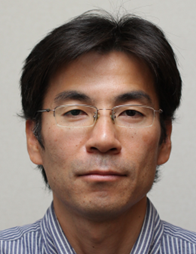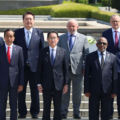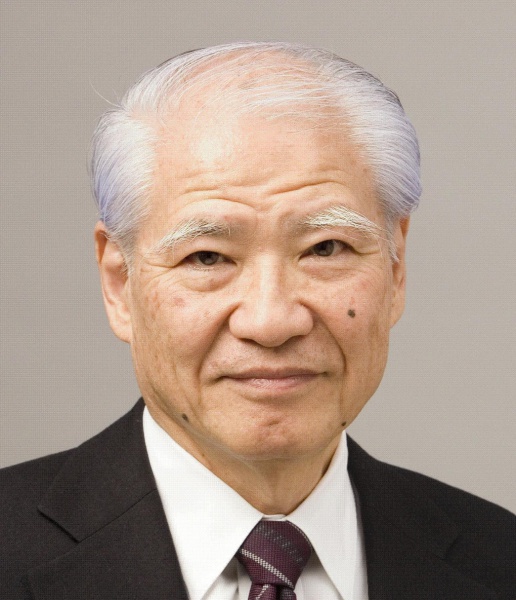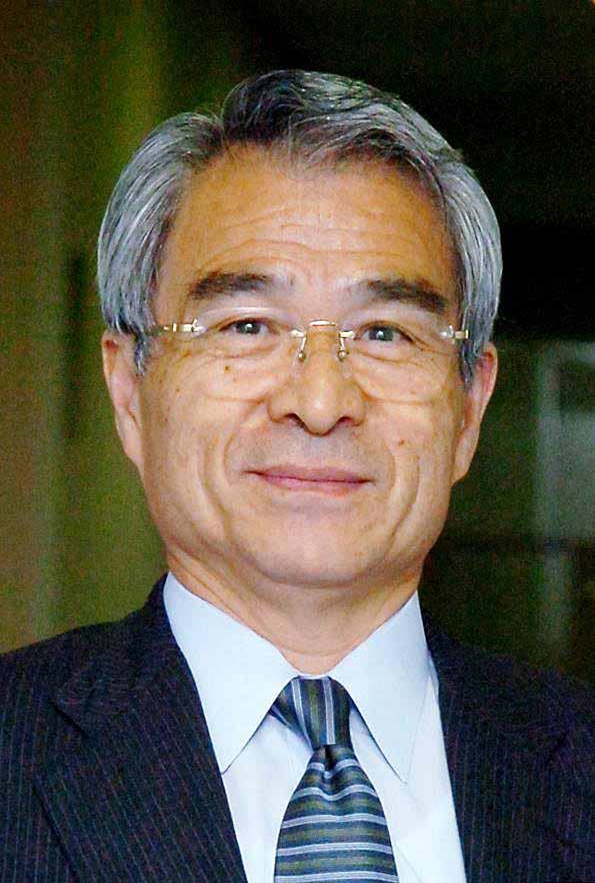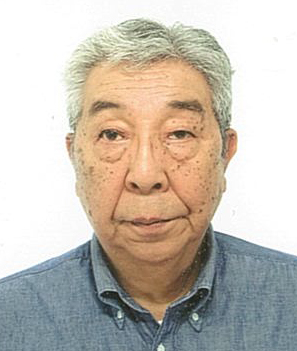Emerging Donors on the Rise

In his January 2023 Policy Speech, Prime Minister Kishida addressed diplomacy and security. “As we face a turning point in history, we will, based on universal values, proactively and vigorously pursue realism diplomacy for a new era in order to fully defend our national interests,” he said. “We will aim to revise in the first half of this year the Development Cooperation Charter, which sets the direction for the next decade, so that it will lead discussions on how to achieve the SDGs, based on the principle of ‘human security.’”
Photo: Cabinet Public Affairs Office
Emerging countries are entering the world of international aid, and South-South cooperation is becoming more multilateral. These emerging donors and developed countries should work together to provide assistance. Developed countries and Japan can consider assistance that promotes transparency and adherence to international standards, and that links issues such as the SDGs and FOIP.
Kondoh Hisahiro, Professor, Saitama University
The rise of emerging countries is not limited to the political and economic arena. Since the early 2000s, aid from emerging countries has been in the spotlight, and the term “emerging donors” has been coined. However, “emerging donors” does not mean newly emerging aid donors. Rather, as will be discussed later, countries such as China and Saudi Arabia are emerging donors in the sense that, although they have been involved in aid for a long time, they have recently begun to attract attention because of their increasing presence and influence in international relations and international development.
Aid from emerging donors may lack transparency or differ from the standards set by the Development Assistance Committee (DAC) of the Organization for Economic Cooperation and Development (OECD), which is made up of developed countries. The DAC coordinates aid programs among donors and works together to emphasize good governance, participatory and democratic decision-making, environmental protection, poverty reduction, untied aid, and grants. In contrast, aid from emerging donors has not been bound by DAC rules, sometimes causing concern, especially among DAC member countries.
Diverse emerging donors with economic interests, religious reasons, etc.
Although they are referred to as emerging donors, their origins, recipient countries, and areas of assistance vary widely. This paper provides an overview of the aid provided by China, Indonesia, Turkey, Saudi Arabia, and the United Arab Emirates (UAE), which are emerging countries that are not Western industrialized countries.
China has been involved in foreign aid since the early stages of its founding. After experiencing economic growth through reform and opening up, institutions of policy loans such as the China Development Bank, the Export-Import Bank of China, and the Agricultural Development Bank of China were established in 1994, and foreign aid came into full swing. To begin with, China’s definition of “foreign aid” is broader than the DAC definition, and includes not only grants (aid with relaxed terms and conditions that does not require repayment of principal or interest) and concessional loans (loans with terms and conditions favorable to the borrower, such as interest rates and repayment periods), but also commercial loans and cultural exchanges, making foreign aid a “trinity” term for trade and investment. Chinese aid is based on a win-win approach, promoting the economic development of recipient countries while benefiting the Chinese economy through tied aid, which requires procurement from Chinese companies. The principle is non-interference in internal affairs, but the “one China” principle, a political conditionality unrelated to the development of recipient countries, is rigidly imposed. Through these operations, Chinese aid will extend the “one China” principle and secure export markets and natural resources for China itself.
Indonesia’s aid history is relatively new. In the past, development cooperation was carried out in a decentralized manner by various ministries and agencies within the government, but the Indonesian Agency for International Development (Indonesian AID) was established in October 2019 to operate in a more centralized manner. In addition to achieving the Sustainable Development Goals (SDGs) and carrying out humanitarian missions, Indonesian AID also aims to contribute to the national economy while coordinating with the government’s foreign policy. Since the establishment of Indonesian AID, Indonesia has provided a total of US$22.91 million in development cooperation funds to 58 relatively neighboring countries, including Palestine, Myanmar, East Timor, Papua New Guinea, and Fiji. These are used for education, health, agriculture, humanitarian aid, etc.
The history of Turkish assistance is interesting. When the Soviet Union collapsed in 1991 and Turkic countries such as Azerbaijan, Kazakhstan, Kyrgyzstan, Turkmenistan and Uzbekistan became independent, emphasis was placed on developing relations with these independent Turkish countries from a “common identity” perspective. The Turkish Cooperation and Coordination Agency (TiKA) was established in 1992 and has been implementing educational and social projects mainly in the Turkic countries of Central Asia and the Caucasus. With the development of Turkey’s active external activities, ODA has been emphasized as an essential tool of active diplomacy, and especially after 2000, the number of regions and countries targeted for assistance has expanded. As a result, the scale of development assistance has increased from approximately US$85 million in 2002 to US$8.399 billion in 2018. TiKA’s development assistance targets a wide range of sectors, including economic, commercial, technological, social, cultural, and educational. TiKA has 63 program coordination offices in 61 countries and provides technical cooperation in more than 170 countries, focusing on areas such as social infrastructure, education, health care, and vocational training. However, when looking at the amount of development assistance by country in Turkey in 2017, aid to Syria was overwhelming at US$7.25 billion, and this includes assistance to Syrian refugees in Turkey.
Aid from Gulf donors such as Saudi Arabia and the United Arab Emirates has many similarities, starting with the common origin of aid provided primarily through the use of petrodollars. The two countries are also similar in their use of loans and grants, primarily to support economic infrastructure. Since religious solidarity with fellow Muslims is one of the motivations for aid, the main recipient countries of both countries are concentrated in the Islamic countries of North Africa and the Middle East. Many of these recipient countries are politically unstable, and Western countries have expressed concerns about Gulf donor aid in the past. In other words, Gulf donor aid lacked political conditionality and was criticized for supporting the Sudanese government, which committed serious human rights violations, and Afghanistan, which was under Taliban control. Despite these criticisms, Gulf donors support internationally agreed development agendas such as the Millennium Development Goals (MDGs) and the Sustainable Development Goals (SDGs). However, Gulf donors are working on donor coordination to improve aid effectiveness, publishing reports on aid flows, and establishing common guidelines for procurement and disbursement processes that comply with international rules. Gulf donors provide aid that is not necessarily foreign to Western industrialized countries.
Thus, emerging donors vary greatly from country to country and include not only donors pursuing economic interests, but also donors providing aid based on ethnicity and religion. In addition, Turkey is a member of the OECD and the DAC, and Indonesia is seeking to join the OECD but has decided not to join the BRICS because of concerns about its influence. The Gulf donors, often seen as heterogeneous, are more cooperative with the DAC. Looking at the cases discussed in this paper, it can be said that Chinese aid is the type of South-South cooperation that is not bound by the DAC and is likely to be of concern to Western countries. Concerns about Chinese aid have often been raised in analyses of bilateral aid, but multilateral aid led by China has also become an issue of further concern among Western industrialized countries.
Multilateralization of South-South cooperation by emerging countries
The multilateral aid system, known as the Bretton Woods system, created by Western countries after World War II, remained almost the only institutional framework for a long time. However, China announced the Belt and Road Initiative (BRI) in 2013 and established the New Development Bank (NDB) in 2014, with BRICS as its unit. In addition, China established the Asian Infrastructure Investment Bank (AIIB) in 2016 and is rapidly advancing the multilateralization of aid.
Primarily, the BRI is intended to shift China’s domestic excess production capacity overseas, secure natural resources, counter Japan’s proactive diplomacy in the Indo-Pacific, and increase China’s economic autonomy from the United States. To invest in infrastructure over a vast area, the BRI established a multilateral capital mobilization mechanism called the AIIB and the NDB. First, the AIIB, headquartered in Beijing, was established in January 2016 with 57 founding members and US$100 billion in capital. Member countries have expanded beyond Asia, and as of January 2024, there are 94 member countries from all continents. Decision-making at the AIIB is supposed to be consensus-based, but China has a prominent 26.06% of the vote.
BRICS, which consists of five countries: Brazil, Russia, India, China and South Africa, jointly established the NDB. NDB mainly provides loans to support transportation, urban development, public health, information and communication technology, water resources management and sustainable infrastructure. The BRICS and NDB have been working with five countries, but this January 2024, Egypt, Ethiopia, Saudi Arabia, UAE, Iran, and Argentina have joined the BRICS, and Bangladesh, Uruguay, UAE, and Egypt had joined the NDB in 2021.
Similar problems have been identified in both bilateral and multilateral assistance involving China. For example, (1) in some cases, the form of the loans is similar to commercial loans in favor of China, (2) there is little benefit to recipient countries because the aid is tied to Chinese companies, (3) strict project evaluation and transparency of loan conditions are required, (4) limited coordination with existing multilateral institutions and limited dialogue with recipient country stakeholders, and (5) a lack of attention to social and environmental concerns. As a result, the cases of the Guadal port in Pakistan in 2015 and the Hambantota port in Sri Lanka in 2017, which have been criticized as “debt traps,” have come to light.
Gulf donors can also be classified as emerging donors that are actively engaged in multilateral assistance. First, Gulf donors contribute multilateral aid to United Nations agencies such as the United Nations Relief and Works Agency for Palestine Refugees in the Near East (UNRWA). Second, Gulf donors have also promoted the institutionalization of their own multilateral aid, establishing 10 international organizations to date. For example, the Islamic Development Bank (IDB), established in 1975 in Jeddah, Saudi Arabia, is the largest aid agency in the Islamic world. The IDB finances economic and social development projects in member countries and Islamic societies. Third, Gulf donors established the Coordination Secretariat of the Arab National and Regional Developmental Institutions, the Islamic Development Bank, and the OPEC Fund for International Development (Coordination Group) in 1975 as an umbrella organization of 10 bilateral and multilateral organizations. The Coordination Group promotes active communication and cooperation among its members to jointly develop aid policies, share best practices, and promote harmonization among member countries. Fourth, Saudi Arabia is a member of BRICS and the UAE is a member of both BRICS and the NDB. This is a risk hedge in a situation where it is becoming impossible to rely solely on the United States to stabilize the situation in the Middle East. At the same time, the Look East Policy is expected to strengthen economic relations with East Asian countries and strengthen relations with BRICS, thereby creating investment opportunities, trade opportunities, and economic diversification for decarbonization.
Japan should provide aid based on diverse ideas
This diversity suggests that the DAC and Japan are not in competition with all emerging donors. For example, Indonesia, Turkey, Saudi Arabia, and the United Arab Emirates are already members of the OECD/DAC, are considering joining, or at least already have cooperative relationships. Therefore, Japan’s aid will likely be able to deepen its cooperation with these emerging donors in the future.
On the other hand, when it comes to aid from China, Japan’s tone has been one of caution and competition. In response to China’s rise, former Prime Minister Abe Shinzo advocated “Proactive Contribution to Peace.” Prime Minister Kishida Fumio calls for “realism diplomacy for a new era” and is working to turn aid policy into a diplomatic tool, with China’s continued maritime expansion and Russia’s invasion of Ukraine in mind. Japan’s aid policy has undergone significant changes. Through the establishment and revision of Japan’s National Security Strategy and the Development Cooperation Charter, national interests became the direct objective to be achieved through aid under the Free and Open Indo-Pacific (FOIP) initiative. Other initiatives include making ODA more secure, investing in high-quality infrastructure, establishing rules for infrastructure development investment and maritime dispute settlement, and supporting debt management and maritime law enforcement capabilities.
The FOIP is a cooperative framework based on multilateral cooperation and is not an initiative that Japan can undertake alone. Cooperation with allies and like-minded countries is inevitable. The FOIP is considered a rational security strategy that has received broad support and cooperation not only from the G7 and other advanced Western countries, but also from ASEAN, India, and other countries. At present, however, FOIP cooperation seems to be discussed too much in the context of international politics and security. Poverty in developing countries is not only determined by lack of rule of law, debt sustainability and supply chain disruptions. Employment, agriculture, education, sanitation, gender, etc. should also be important factors.
Moreover, the SDGs are goals with a 2030 deadline, and discussions about post-SDGs are likely to become more active in the future. Russia’s invasion of Ukraine and Israel’s aggression in Gaza have had a huge impact on the international community. Pillars such as the rule of law and peace are sure to receive even more attention in the future, and it is timely to reflect the basic ideas of FOIP in the post-SDG discussions. At the same time, FOIP thinking needs to reflect not only security discussions, but also the development goals of developing countries.
To this end, it is necessary to expand cooperation with “like-minded countries” within the aid community. Among the emerging donors covered in this paper, Japan has been providing training on donor support to TiKA and other aid-related ministries since fiscal 2015. Thailand, Indonesia, Malaysia and other countries have become emerging donors, and their counterparts from Japan’s aid have been assigned to government agencies in their countries as “graduates.” Japan should network with these “graduates” to expand FOIP and deepen their understanding of the need to reflect FOIP in the post-SDG discussions.
On the other hand, how could Japanese aid deal with Chinese aid, with which it is in a competitive relationship? Recently, Japanese aid has revived tied projects for Japanese firms under the FOIP due to competition with Chinese aid, but the participation of Japanese firms with inferior cost competitiveness may result in high-cost aid. Is there a risk that both Japan and China will fall into a “race to the bottom” through competition? Rather than focusing on securing immediate material national interests through tied aid, it would be in Japan’s national interest to design, disseminate, and establish international rules for infrastructure construction aid and debt issuance, and to bring China on board and have it participate in these international rules.
Translated from “Sonzaikan masu Shinko Dona (Emerging Donors on the Rise),” Gaiko (Diplomacy), Vol. 84 Mar./Apr. 2024, pp. 26-31. (Courtesy of Toshi Shuppan) [June 2024]
Keywords
- Kondoh Hisahiro
- Saitama University
- emerging countries
- emerging donors
- international aid
- foreign aid
- South-South cooperation
- multilateralization
- international relations
- international development
- Development Assistance Committee (DAC)
- Organization for Economic Cooperation and Development (OECD)
- aid programs
- Japan
- China
- Indonesia
- Turkey
- Gulf donors
- Saudi Arabia
- United Arab Emirates (UAE)
- tied aid
- Belt and Road Initiative (BRI)
- New Development Bank (NDB)
- Asian Infrastructure Investment Bank (AIIB)
- BRICS
- “debt trap”
- Free and Open Indo-Pacific (FOIP)
